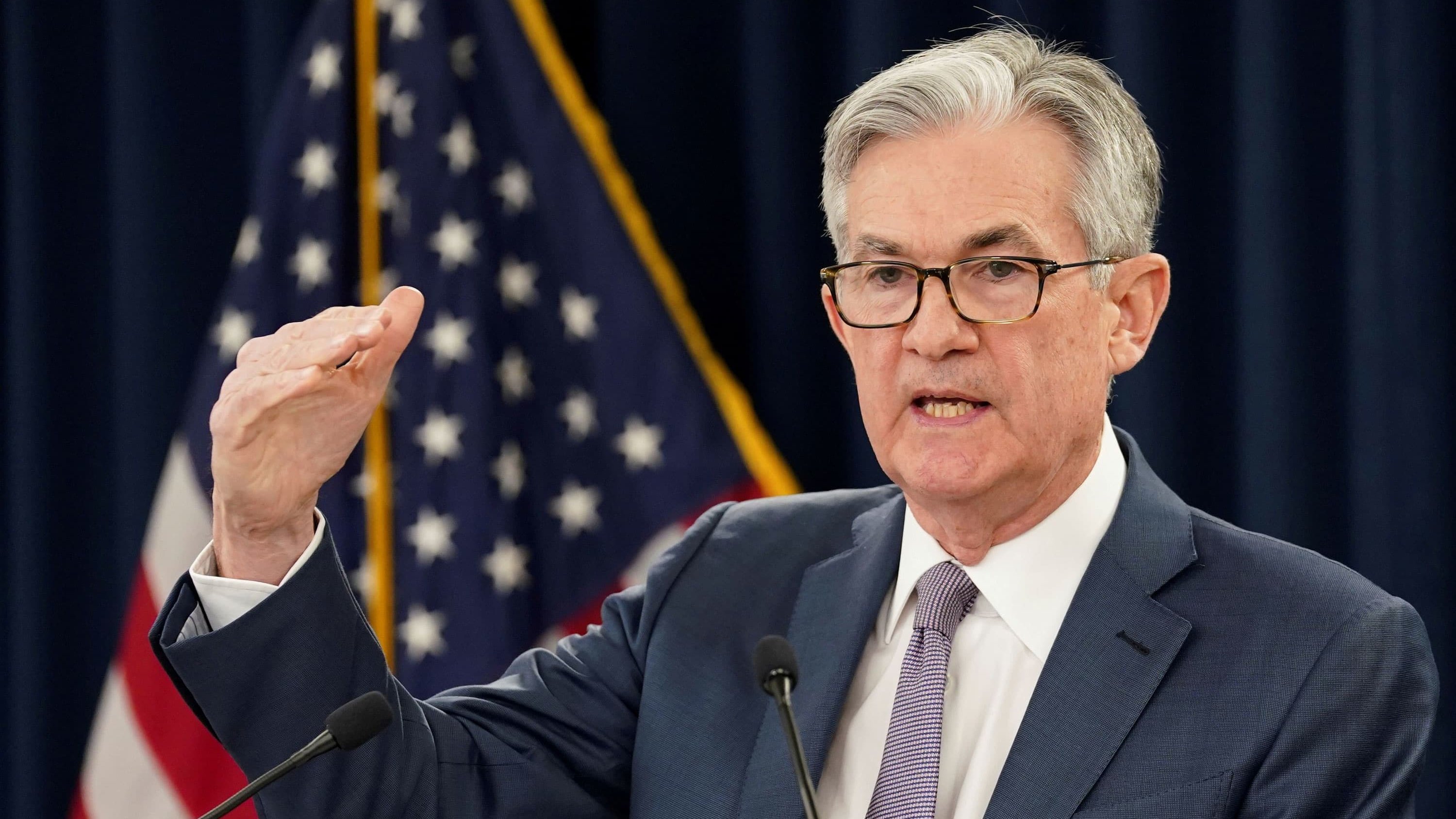Today’s News
Federal Reserve officials have scheduled just one interest rate cut for this year, responding cautiously even as recent inflation data showed improvement. The Federal Reserve maintains its benchmark rate at a steady 5.25% to 5.5%, aligning with expectations. Projections indicate that 15 of 19 officials anticipate reducing rates this year, likely by a single cut.

Image Source: Reuters
Fed Chair Jerome Powell, addressing a news conference, acknowledged positive developments in inflation control, stating, “We’ve made pretty good progress on inflation.” However, he emphasized the necessity for more consistent positive data before considering further rate cuts.
Despite Powell’s cautious stance, markets responded positively, with the Nasdaq Composite climbing 1.5% to a new record and the S&P 500 gaining 0.9%, reaching a historical peak. The 10-year Treasury yields also fell to 4.294%, continuing the upward trend in bond markets as prices and yields moved inversely.

Image Source: Wall Street Journal
The latest report from the Labor Department reveals that the consumer-price index, which measures economy-wide inflation, showed minimal change from the previous month and a year-over-year increase of 3.3%, slightly down from 3.4% in April. Core inflation, excluding food and energy, rose by just 0.2% from April, marking the smallest increase since 2021 and falling below economists’ expectations.
Laurence Meyer, a former Fed governor and current head of an economic advisory firm, found the report very promising, suggesting that while he’d like to see more data, a rate cut in September could be possible. This broad-based slowdown in inflation might bolster the Federal Reserve’s confidence that inflation rates are moving back towards their target.
Despite these encouraging signs, the unexpected spike in inflation at the start of the year has made Federal Reserve officials and investors wary, as earlier expectations for rate cuts were disrupted. Now, with the latest data, investors are keenly watching whether Fed officials will project one or two rate cuts for the year. In March, projections had anticipated up to three cuts, but stubborn inflation has reset those expectations.
Officials have recently updated their rate projections, and while they could revise them until the end of the Fed’s meeting, some analysts view these projections as outdated given the latest consumer-price data (CPI). Powell emphasized the conservative nature of these inflation projections at a recent news conference.
Looking ahead, Fed officials will consider additional inflation reports before their next meetings in July and September, with the latter being the Fed’s last gathering before the November 5th U.S. presidential election.
“The story is that they’re not ready to cut rates. We are on an inflation roller coaster. You have to be careful here,” said Meyer.

Image source: Wall Street Journal

Image Source: Wall Street Journal
Federal Reserve Chair Jerome Powell and his colleagues are reluctant to lower rates without solid proof that their current monetary policy is sufficiently restrictive. However, they are concerned that waiting for this evidence might delay action too long, potentially triggering significant unemployment.
The Fed is currently navigating between two significant risks. The first risk involves the potential for increased economic hardship for banks and businesses that are least equipped to handle high interest rates and might face severe difficulties if expected rate cuts do not materialize soon.
Another risk that Federal Reserve officials are considering is that rate cuts could spark market rallies and elevated spending, potentially keeping inflation above the Fed’s 2% target. The core prices within the index tracked by the Commerce Department rose to 2.8% in April.
Recently, Fed projections were adjusted to anticipate a 2.8% rise in core prices by the fourth quarter, compared to a previous estimate of 2.6%. They expect a gradual reduction in core inflation to 2.3% next year, eventually reaching the target of 2% thereafter.
Amidst differing global economic conditions, central banks in Europe and Canada initiated their first rate cuts of the current cycle last week, noting that growth in these regions has been weaker compared to the U.S. Many American homeowners have been less affected by the rate hikes due to securing very low 30-year fixed-rate mortgages during 2020 and 2021.
Video Source: CNBC Television
Fed Chair Jerome Powell has expressed confusion about why the Fed’s aggressive interest-rate policy hasn’t more significantly slowed economic activity. However, various labor market indicators have returned to their pre-pandemic norms seen in 2018 and 2019—a period characterized by steady growth and low inflation—suggesting that the policy and resolution of pandemic-related disruptions are indeed having a moderating effect on the economy.
Powell attributes this resilience partly to increased immigration and workforce participation last year, which boosted both demand and the economy’s capacity to supply goods and services.
Despite these economic indicators, American consumers remain pessimistic about the economy, largely due to the substantial rise in the cost of living since 2021. Prices have increased by 22% over the last four years, significantly more than the 7% increase seen in the previous four years. Furthermore, the slowdown in inflation has not yet resulted in lower borrowing costs; the 30-year fixed-rate mortgage rate remains around 7%, the highest since 2001, and credit card interest rates are notably high at 22%.
Other News
Oil Prices Dip Amid U.S. Economic Growth Concerns
Oil prices dropped slightly as concerns over U.S. economic growth and high crude inventories influenced the market. Ongoing geopolitical tensions and excess supply continue to impact oil trading.
Sigma’s USD 5.9B Merger Under Regulatory Review
Australia’s ACCC has raised concerns about Sigma Healthcare’s proposed USD 5.9 billion merger with Chemist Warehouse, warning it could stifle competition. A final decision is expected by September 5.
High Interest Era Persists, Yield Big Opportunities
Despite a slight cooling of inflation to 3.3% in May, the Federal Reserve plans only one rate cut this year, continuing the trend of high interest rates that have boosted returns on savings and bonds.



